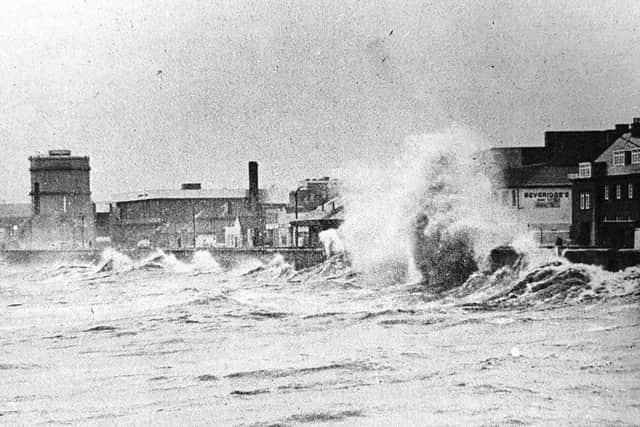1979: Huge waves batter Kirkcaldy
and live on Freeview channel 276
Up until Christmas, the winter had been quite mild, but the rain would turn to snow in many parts of the country, paving the way for worse to come.
Snow fell heavily on Friday, December 29, lasting through until Hogmanay with a depth of several inches, while a strong easterly wind caused deep-drifts in exposed areas.
Advertisement
Hide AdAdvertisement
Hide AdAnd there was to be no quick thaw as temperatures plunged to minus 11 degrees centigrade and the New Year holiday kept people off the streets.


The bad weather came to Britain from the east via Russia and it seemed that Fife caught the worst of the snow and wind.
First to be hit on Saturday as the snow built up were the roads. Driving conditions were difficult and bus services in the region were subject to delays.
But the weather was to get worse as people realised when they awoke on Hogmanay to even more snow.
Advertisement
Hide AdAdvertisement
Hide AdVillages in the East of Fife, were completely cut off by the snow and they remained that way for almost 48 hours.
So many roads were blocked that it became impossible for Fife Police to keep track and it took a long time for the snow ploughs to make much impression.
You may also be interested in:
Bus services were completely withdrawn and the police appealed to motorists not to take their cars onto the streets unless their journey was absolutely essential.
Nowhere in the Kingdom though, was as badly affected as Kirkcaldy.
Advertisement
Hide AdAdvertisement
Hide AdHigh seas, whipped up by the fierce easterly wind, lashed the Lang Toun Kirkcaldy over New Year weekend, causing widespread flooding and extensive damage to property along the seafront.
With snow falling heavily, the Esplanade was closed to traffic on the Saturday and the situation reached a peak on Sunday when the road was flooded to a depth of several inches.
Numerous properties from the Port Brae to the Links were affected, as well as some High Street shops with basements to the rear.
The aftermath saw many people who had been on ”flood alert” over Hogmanay, spend the first days of the New Year clearing seaweed, mud and debris from their property.
Advertisement
Hide AdAdvertisement
Hide AdThe tides reached their highest at 3am and 3pm on December 31 and it was late on the Sunday night, almost 30 hours later, before the road could be re-opened.
At the peak of the storm, rowing boats and canoes were brought into use in case evacuation was necessary.
Eventually, the tides subsided, leaving a trail of devastation on the sea front.
Seaweed was strewn about the car park in Tolbooth Street, whilst the former Department of Employment Offices were damaged – one door was completely off its hinges and another smashed in.
Advertisement
Hide AdAdvertisement
Hide AdAlong the sea front there were several holes in the Harbour wall and large sections of both the inner and outer sea walls lay scattered on the Esplanade.
At the country bus station, litter bins and other debris were scattered over a wide area, and at the bus booking office on the opposite side of the road part of an adjoining fence was blown down. Sandbags and broken glass completed the desolate scene.
Businesses near the sea front were hit. The Hotel Ambassadeur was completely flooded and lost significant trade, with the Garrison Disco suffering the same fate.